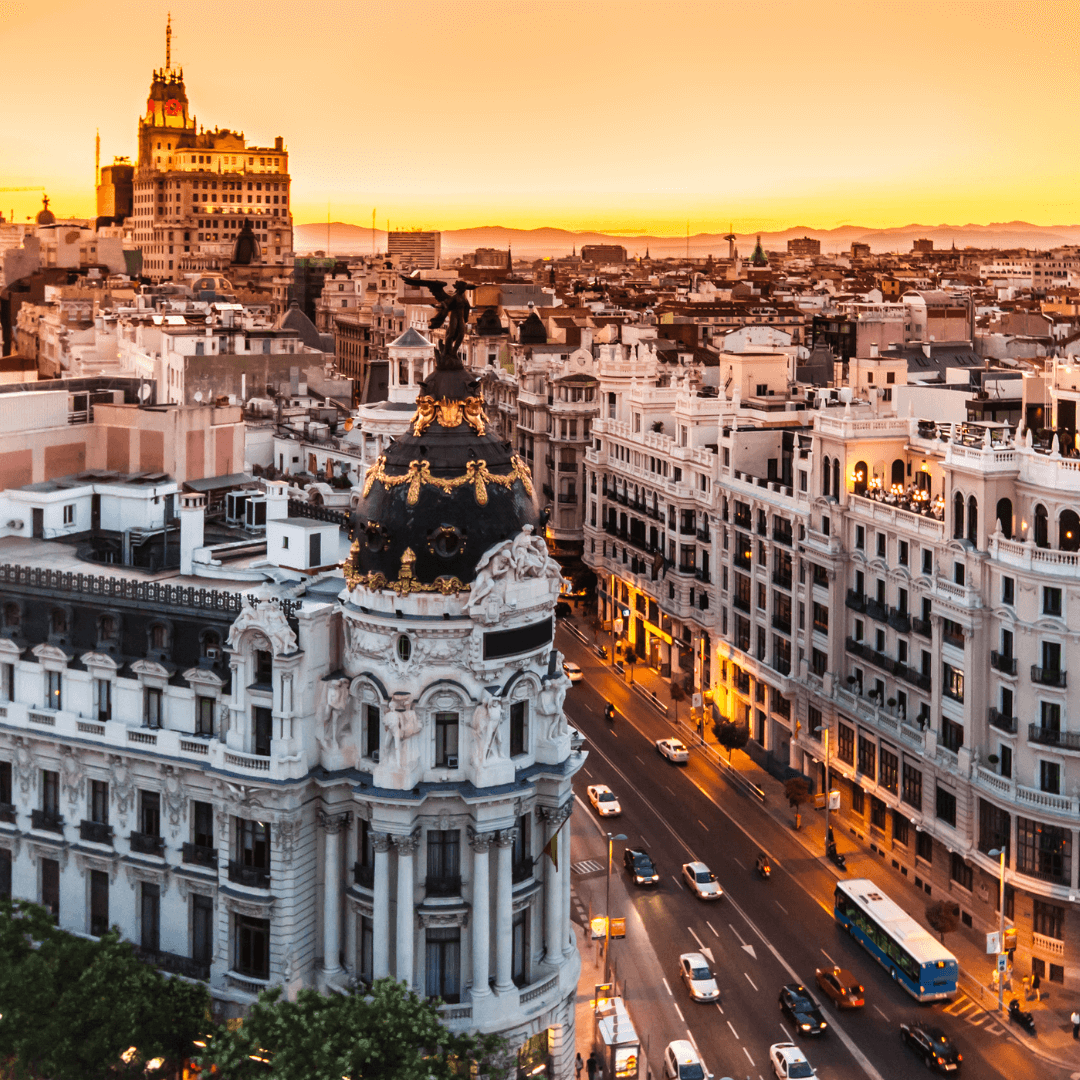Madrid, Spain’s vibrant capital, has witnessed an architectural metamorphosis in recent years. From the revitalisation of historic neighbourhoods to the incorporation of modern designs, the city has embraced an architectural diversity that reflects its dynamism and adaptability.
A rescue from the past, revitalisation
One of the most notable aspects of architectural evolution in Madrid has been the effort to preserve and revitalise its historic neighbourhoods. Emblematic places such as Malasaña or Lavapiés have undergone a renovation that respects the essence of their traditional architecture, while introducing modern elements to meet contemporary demands. The restoration of old buildings and the adaptation of spaces for new uses have given new life to these areas, creating a unique fusion of the traditional and the innovative.
Touching the sky, the changing silhouette of Madrid’s skyline
Madrid has witnessed a remarkable change in its skyline through the construction of taller and taller buildings. Projects such as the Torre Caleido or the Cuatro Torres Business Area have redefined the urban skyline, providing a contemporary stamp on the city. These structures are not only architectural landmarks, but also symbols of Madrid’s ambition and progress in the 21st century.
Sustainability in the centre, designs that think about the future
Sustainability has positioned itself as a central theme in the architectural transformation of Spain and, consequently, of Madrid. Ecologically conceived buildings such as the Castellana 77 office complex stand out as examples of how architecture can be both aesthetically and environmentally responsible. The integration of green technologies, energy-efficient systems and the use of sustainable materials are shaping a city concerned with its future.
Transformation is not limited to private structures; public spaces have also been the focus of attention in Madrid’s architectural evolution. Projects such as Madrid Rio have converted former industrial zones into green areas and creative spaces, encouraging outdoor living and community interaction. The city seeks to create a balance between modern architecture and urban quality of life.
The future of architecture in Madrid, an ever-changing palette
Madrid continues to evolve, and its architectural diversity continues to expand. With future projects such as the development of the Chamartín district and the expansion of the Zona Norte, the city is poised to welcome new expressions of architectural creativity and innovative design. The evolution of architecture in Madrid reflects a city that embraces its history while looking to the future. At Renta Corporación we have been working for more than 30 years so that cities like Madrid can carry out urban revitalisation and sustainable modernisation with contemporary designs, always preserving their historical and cultural heritage.

